Neil Clifford is a bronze sculptor working in mixed media to create his one-of-a-kind pieces. Based in Toronto, Canada, Clifford’s approach as an artist reflects his deep appreciation of nature, and the journey along the water’s edge. He is often struck by an element in nature—sometimes a granite rock shaped by water, sometimes a bird transitioning from water to air. These findings and moments are where his unique ideas begin to unfurl. The “full service” artist completes his work from his studio from beginning to end, using only a foundry to pour the bronze itself. Clifford explains how he became a sculptor, how his life inspires his art, and the process itself.
I used to be a dancer, and I was an actor before I became a sculptor. I have been incarnating through the arts in my life.
Neil Clifford
I used to be a dancer, and I was an actor before I became a sculptor. I have been incarnating through the arts in my life. I learned to sculpt in Bali. At the time [25 years ago], I got an arts grant to study in Bali. I was going to study ceremonial dance. I put together a really good project and proposal and I got all this money to go over to Asia and study the lively arts in Bali.
When I first got there, I met some old mask makers –carvers– that make masks for ceremonies. I sat in these huts with these old carvers and learned to work three-dimensionally. When I got back I had to write a report for the town council. I made a very compelling argument that one thing can lead to another to another, and it’s all part of the journey. And I’ve been sculpting successfully for the last 25 years because of that experience that happened first in Bali. That was my introduction to sculpture and carving.
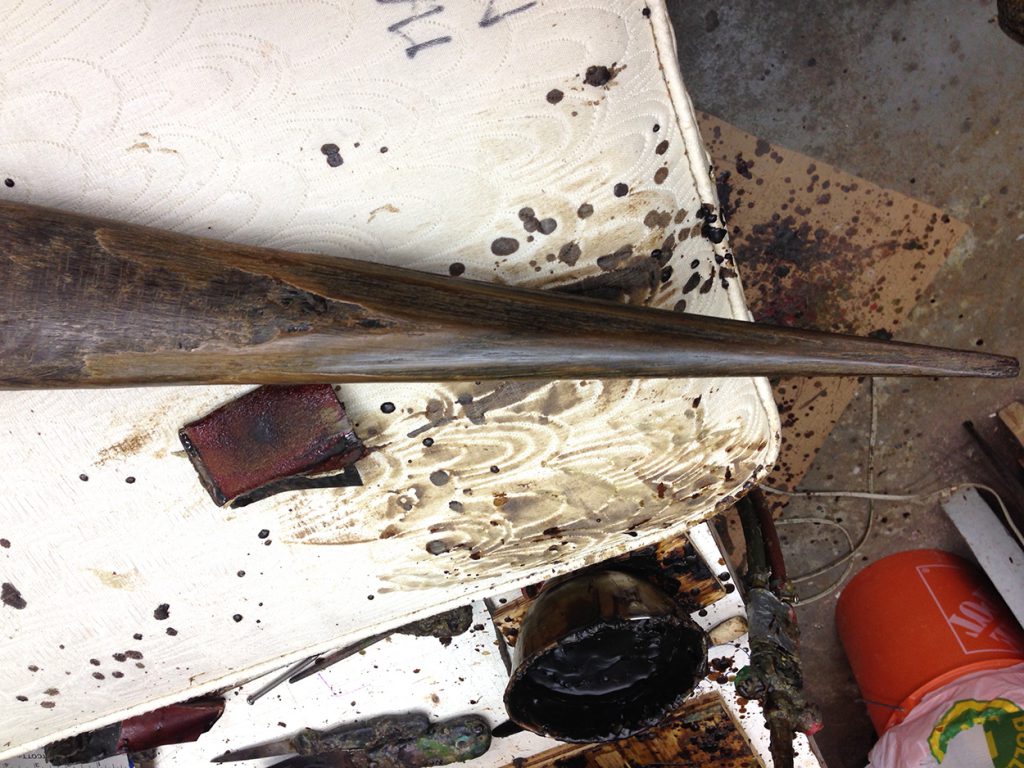
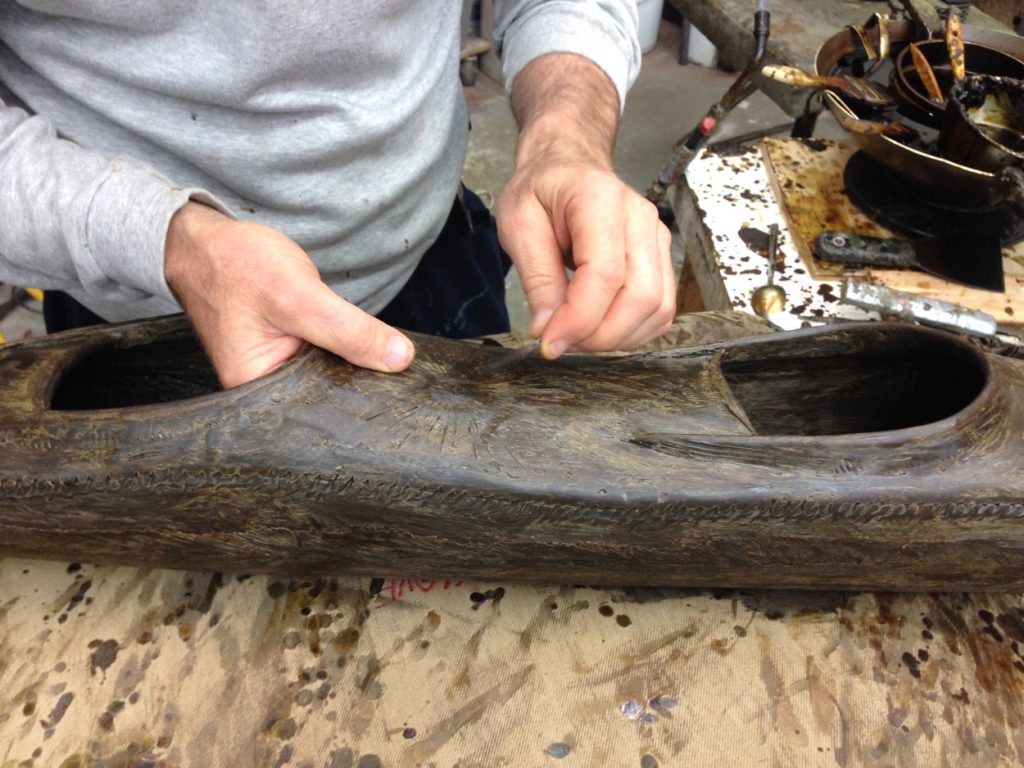
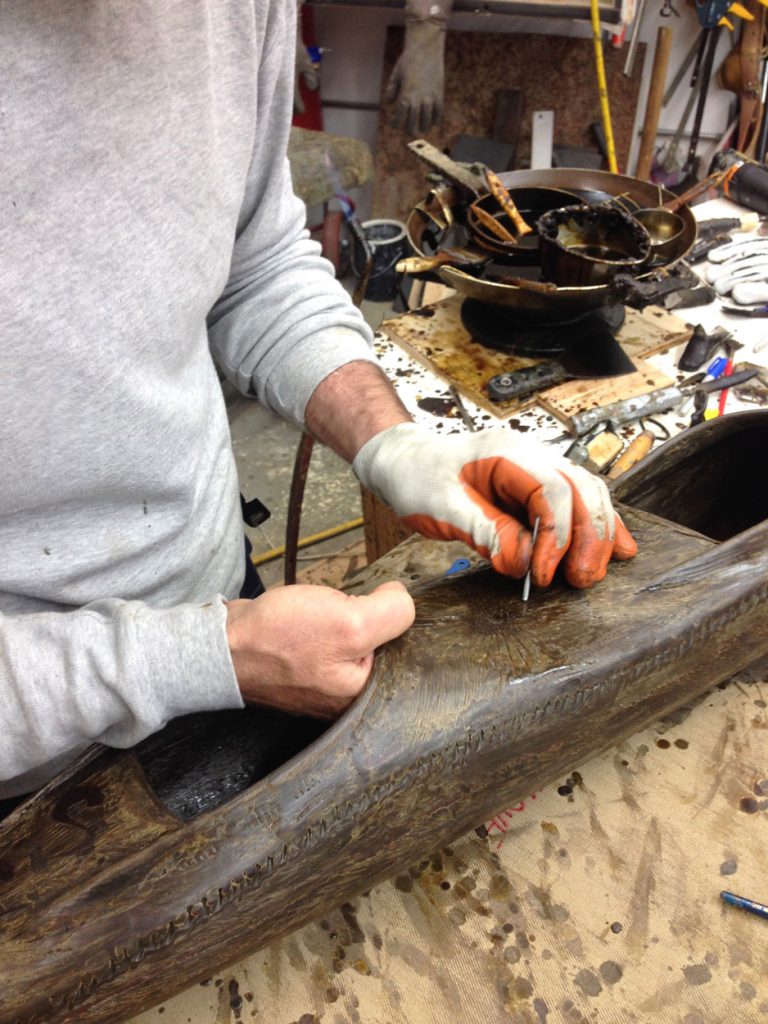

I feel very much at home on the water. I was just out paddling in Georgia Bay on the great lakes out here. It’s a beautiful way to explore an environment —a two-week trip— you’re really out in the wild. It’s a great mode of transportation, catching fish, and living on the land. I put that passion for my own journeys through life into my work.


I put a lot of surface texture and information into the kayak so that it had a sense of history and sense of being used and worn, just like the granite that I was finding– granite that has been split off of a larger piece and then weathered, and worn, and textured by the winds and the waves. Most stones I find are onshore—coast, islands, river banks, and marshes. I don’t find them in the forest. They had been shaped by the water. That makes them very special to me as well.
In the case of “Cresting,” I had gathered some stones up north that I brought back to my studio. It was wedged between rocks on a shore on an island of Lake Heron. I saw the curve in it, and thought—that is really like a cresting wave. I was with a friend who was paddling with me, and she couldn’t understand what I was seeing.
Every day I looked at the stones, and it took about a year to have the moment of “kayaks, of course! That’s why I have these stones.” It took being present with the stones [in my studio] to see what would come from them. I didn’t have the idea of kayak first and then found the stone.
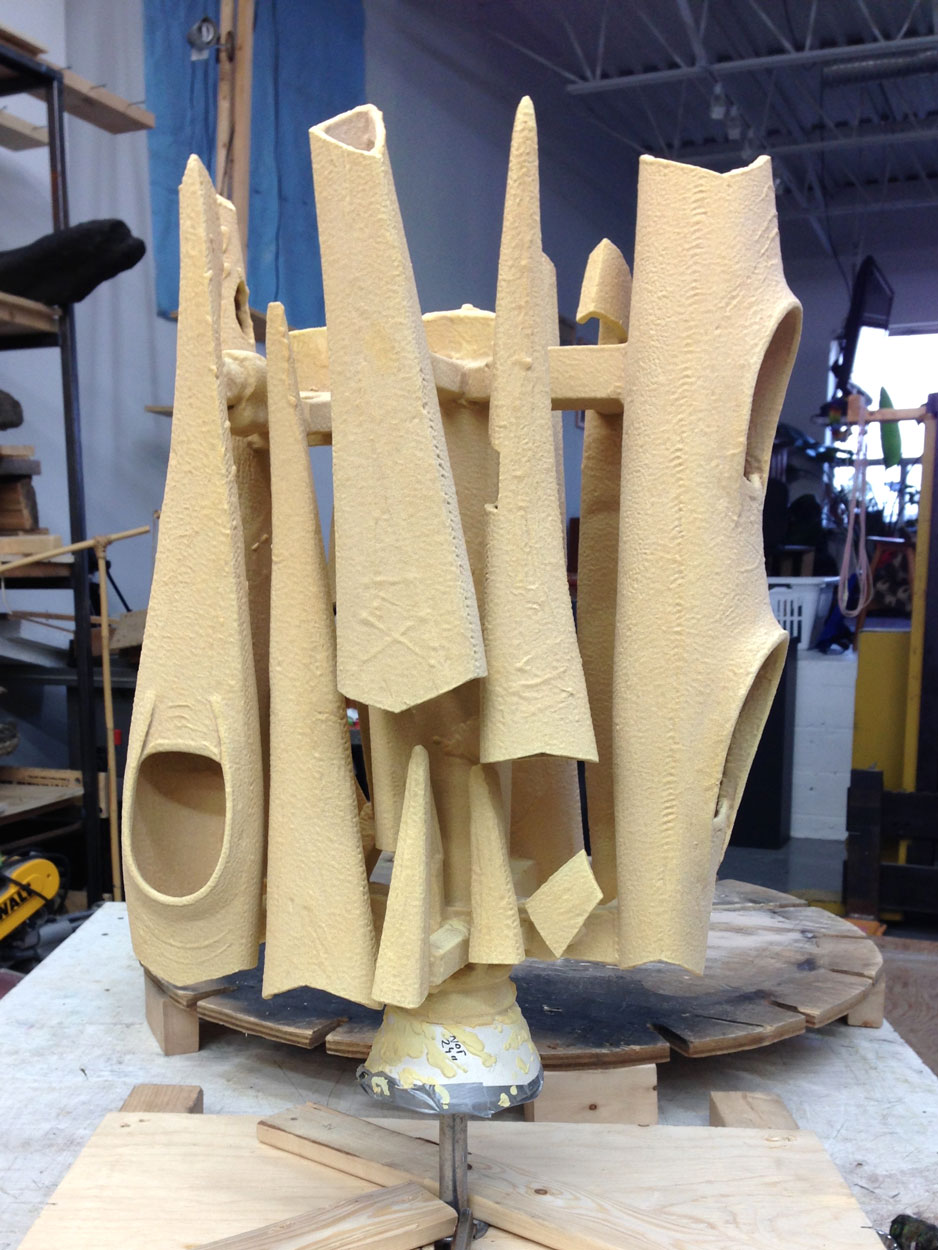 |  |
I work with Lost Wax Bronze Casting—you have a form that is either cast or made directly from wax. The wax sculpture is dipped into liquid ceramic which coats the wax and hardens around it. You dip it and dry it, dip it and dry it, and build up the thickness. At that point, the ceramic shell and wax are fired in a kiln. The form must be placed upside down so all the wax that was once inside is now gone and you’re left with a void or cavity that the bronze will be poured into. Of course, this means that the original wax sculpture that I make of the vessel is lost in the casting process.
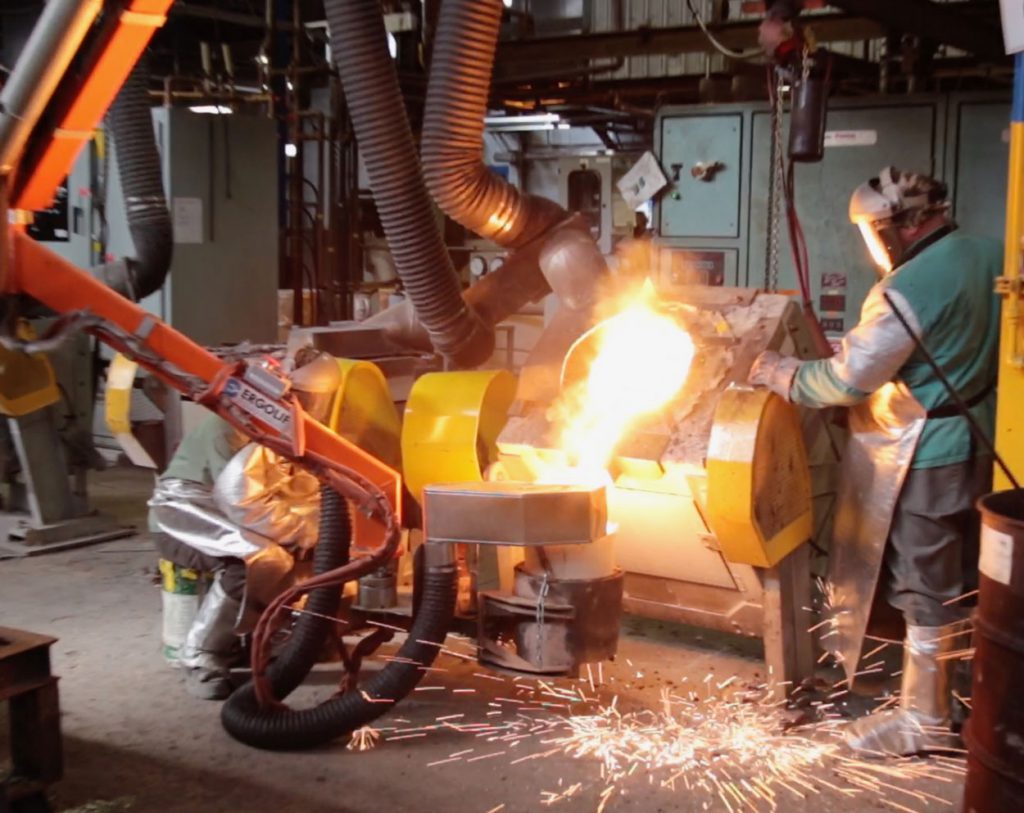
I’ve been casting with the same foundry for 25 years. I go to an industrial foundry—they cast car parts and industrial things. They cast 100,000 parts for a car, and they cast it in bronze. If they break one of their molds, not a big loss. If they break one of mine, it’s 3 months of work.
It really gets the workers on the floor excited. They’re blue collar dudes. But they huddle around when I bring pieces in. They check it out. They’re very excited. It allows them to take care—they realize they could make or break this piece, and my art—so they take the work very seriously. They didn’t at the beginning, but it took time to educate them so they understood how long it took and how valuable it was to me. They really loved the fact that they weren’t casting a car part—this widget—where one thing looks like another and another. My work has real energy to it. They learned how to take care of my work over time.
When it comes out of the mold they divest the shell off the cast bronze. They sandblast it to get the ceramic shell out of the crevices and cracks. When a sculpture leaves the foundry it’s a dull, matte, bronze color. Many of my pieces are cast in sections and I weld them together. I do the patinas and the mounting. I’m a very full-service artist. I don’t shop things out except for the actual pouring of the bronze.

I’ve been studying patinas and patination for… ever. I went down to Loveland, Colorado, which is a big sculpture mecca where I studied with Pat Kipper. He’s like the best-of-the-best. I did some workshops with him, too, that he taught over the years. There are all these formulas. Heating the bronze and dapping or spraying different chemicals and oxides on the bronze which fizzle and bite into the surface of the bronze and give it different textures.
There is a lot of labor and time that goes into my work and process. Many bronze artists, all they make is the original piece and that’s it—they never see it again—it goes to an art foundry and it gets shipped out to galleries. When I finish a piece, it is finished here at my studio, so I have to crate it up and ship it out. I love the process. That’s what makes my work a little more, I don’t know, personal.

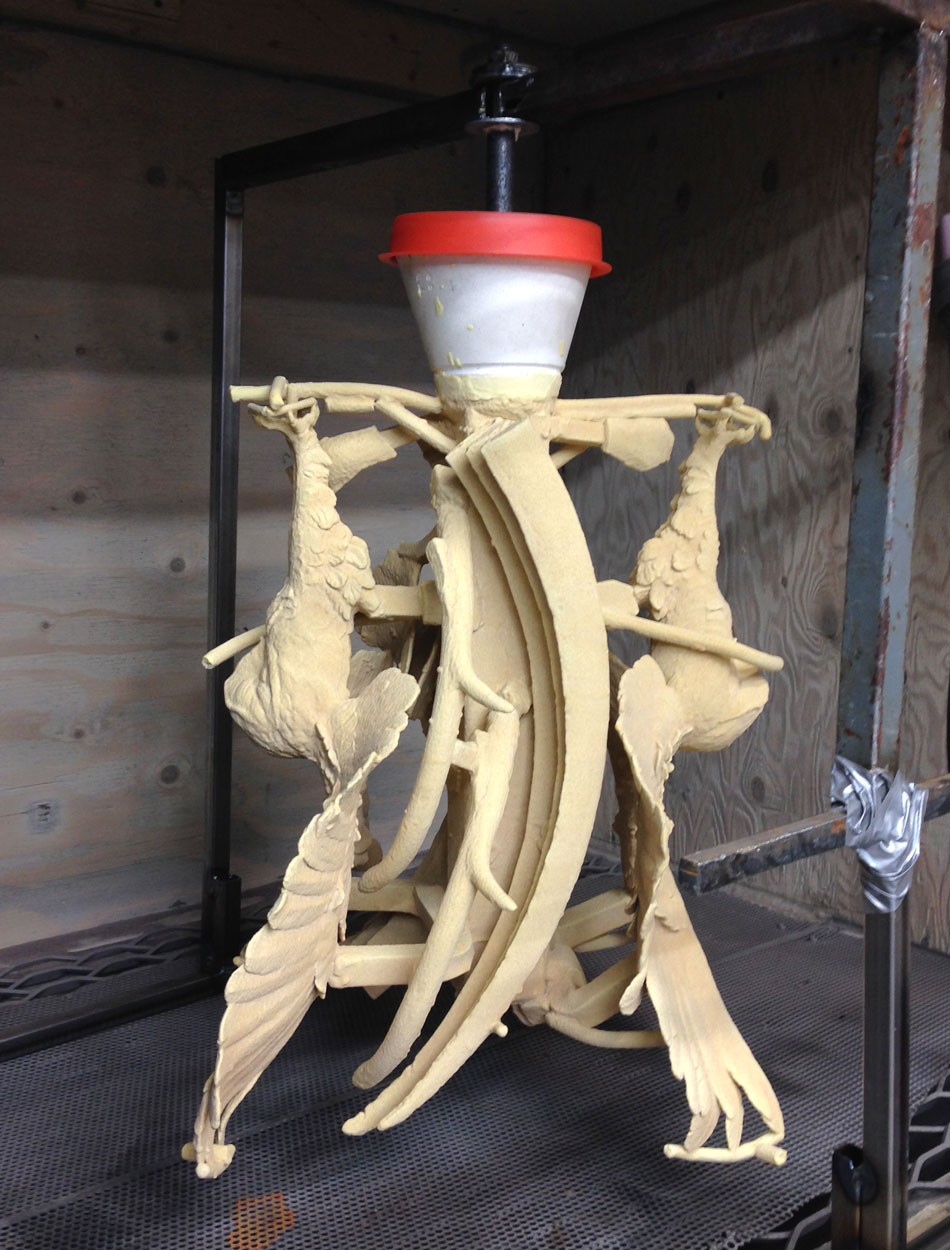 | 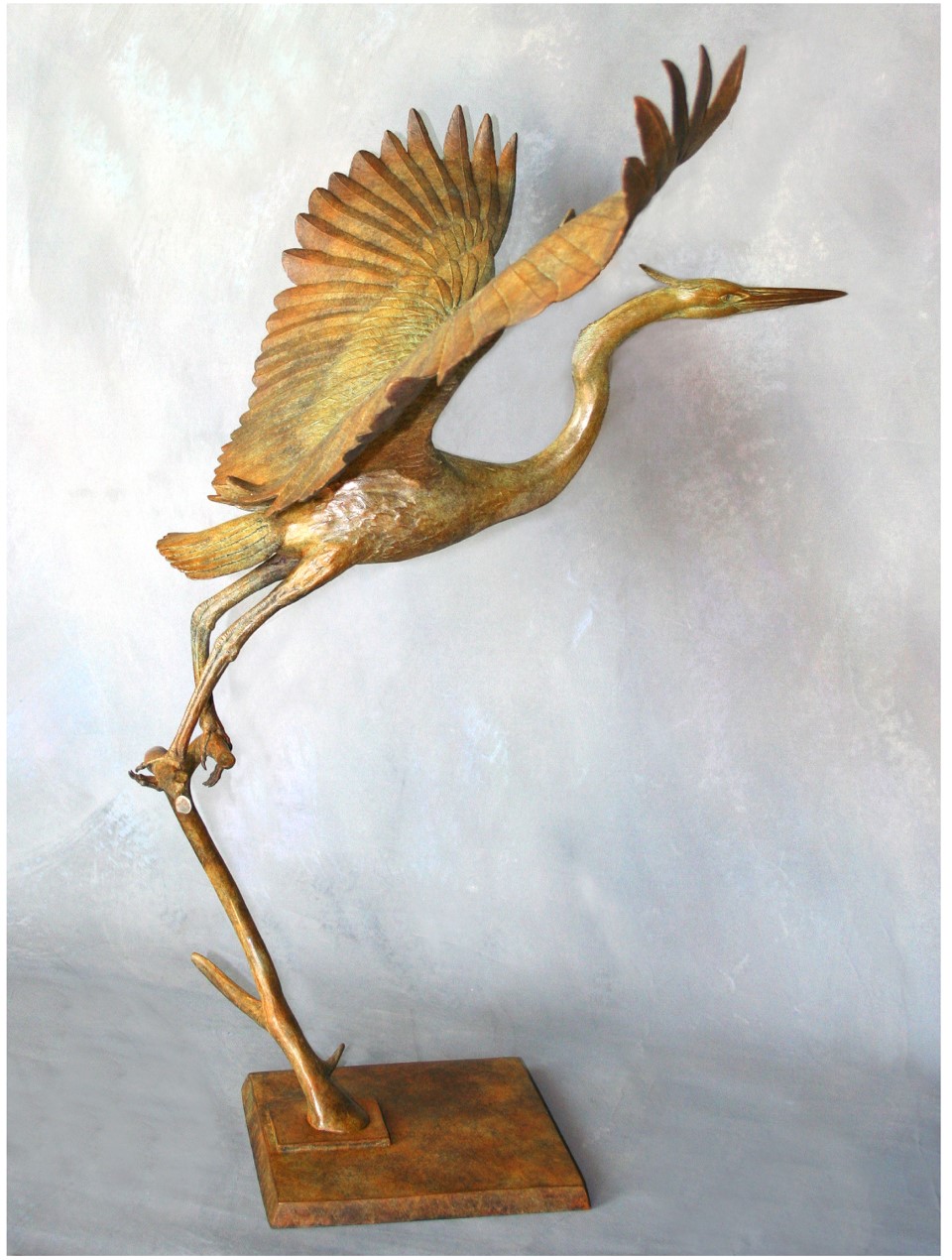 |
“Release” is cast in 7 pieces and then welded together. On top of that you put a patina to further hide the weld. Historically it was the craftspeople [the welders] and not the artists who were considered the real artists.
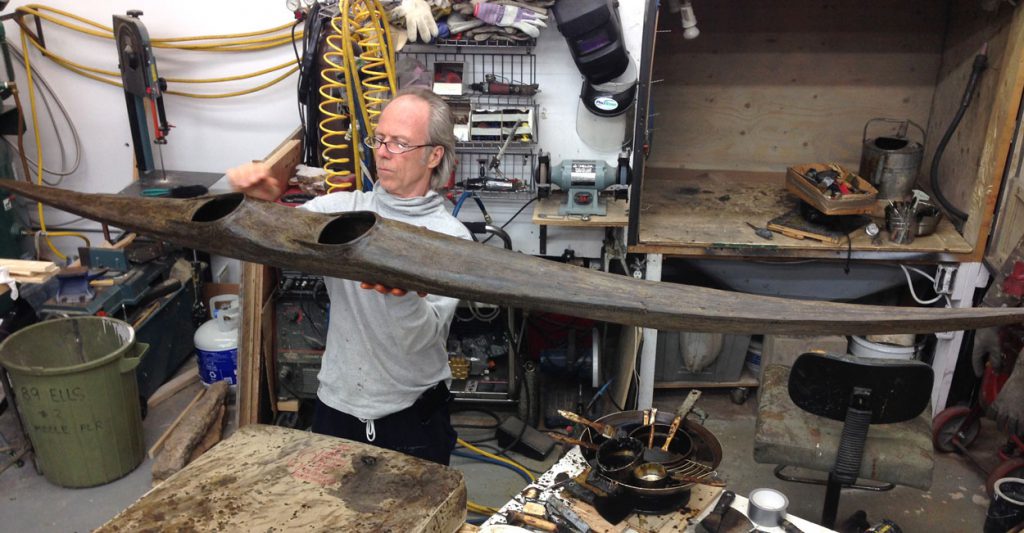
Learn more about the work of Neil Clifford by visiting his artist page, or contacting Ann Korologos Gallery by phone at 970-027-9668, by emailing art@korologosgallery.com, or by visiting the gallery in person at 211 Midland Avenue in Basalt, Colorado.